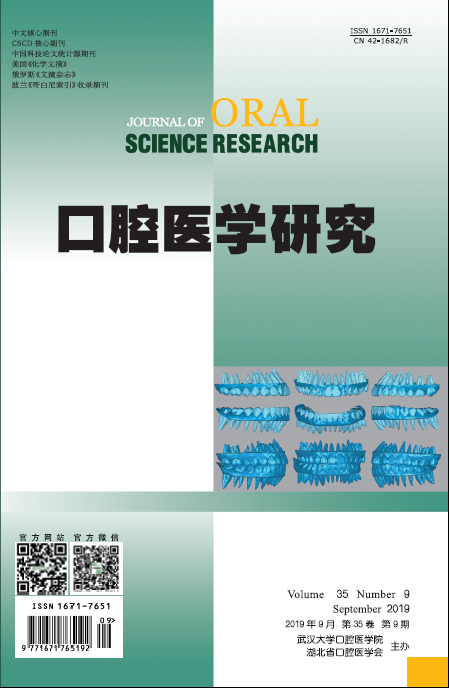|
|
Inflammatory Gene Expression in Chronic Periodontitis and Peri-implantitis in Patients with Type 2 Diabetes
WU Peng, GAO Chengzhi
2019, 35(9):
854-857.
DOI: 10.13701/j.cnki.kqyxyj.2019.09.009
Objective: To investigate the effects of metabolic changes on inflammatory factors and monocyte chemotactic in patients with type 2 diabetes mellitus (DM), as well as to study their gene expression levels in chronic periodontitis (CP) and peri-implantitis (P-IM). Methods: 143 patients with periodontal disease and 24 healthy individuals (control group) in our hospital from June 2016 to December 2018 were selected. The disease exposure factors were compared. The clinical indicators of different types of patients were compared. The mRNA expression levels of inflammatory factors such as tumor necrosis factor-α(TNF-α), interleukin-6 (IL-6), and interleukin-8 (IL-8) in the periodontal and implants were detected. The correlation of inflammatory factors among different patients was determined. Results: The age, high fasting blood glucose, high glycosylated hemoglobin (HbA1c) level, and smoking history were risk factors for CP and P-IM diseases. The percentage of plaque index (PLI), gingival index (GI), bleeding on probing (BOP), probing depth (PD), attachment loss (AL), and bone loss (BL) in patients with periodontal disease were higher than those in control group. GI, PD, AL, and BL in patients with poor blood sugar control were significantly higher than those in patients with good blood sugar control. Among patients with DM, the expression of TNF-α was more obvious in patients with P-IM, and the expression of IL-6 and IL-8 was more obvious in patients with CP. TNF-α, IL-6, and IL-8 were highly expressed in patients with poor blood sugar control. TNF-α, IL-6, and IL-8 were positively correlated with the severity of CP and P-IM diseases among patients with poor blood sugar control (P<0.05). Conclusion: Among DM free patients, inflammatory response in P-IM is more serious than that in CP, while DM can aggravate the progression of CP and P-IM diseases by affecting the expression of inflammatory factors in vivo.In addition, the hyperglycemia status in DM patients has a greater impact on GI, PD, AL, and BL.
References |
Related Articles |
Metrics
|

